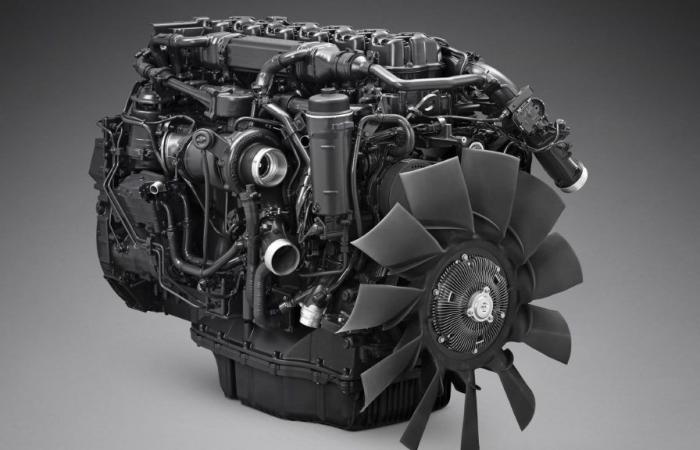The Scandinavian company Scania is an emblem of the heavy transport industry, recognized in every corner of the world for its large trailer trucks that travel thousands of kilometers without refueling. Now they have announced the launch of OC13, based on the hydrogen engine but suitable for large vehicles. It offers greater performance and power than its traditional diesel version.
The largest hydrogen engine in the world
Scania is putting all its efforts into developing new more sustainable and efficient engines that can help reduce the carbon footprint. This is especially complex in the heavy transport industry, where titanic trucks with their tons of cargo cannot get enough power from a hydrogen or electric engine.
But sustainability is key if we do not want the damage caused to the environment to be irreversible, so the automotive firm has managed to develop an engine model that takes advantage of advances in biogas. Incorporating advanced electronic distribution technology, quality materials and emission-free gas, they have managed to give new meaning to an emblematic model.
This is the new OC13, based on the hydrogen engine design, this gigantic 13 liter engine runs on biomethane, which is produced from organic waste in a completely emissions-free process. With a power of 420 HP and 2100 Nm of torque, it represents a 5% improvement in performance over its natural gas-powered predecessor.
Power and sustainability, Scania’s objective
With this new engine, the company seeks to take its signature towards the energy transition, proposing transportation alternatives that do not emit Co2 and can even reduce the industry’s operating costs. This has been possible thanks to the perfect balance between new mobility technologies and the solid mechanics that made the launch of the OC13 so important.
We are talking about a 5% performance improvement for a mechanics that barely introduces modifications. The CNG-powered version already offered greater efficiency in reducing emissions thanks to its EGR (exhaust gas recirculation) system, which allows better compression to be achieved by taking advantage of most of the exhaust gases.
The modifications in the new OC13 mainly include the introduction of smart technology for efficient fuel use, optimization of the driving experience and the possibility of using biogas instead of natural gas. Previously, the technology based on the hydrogen engine complied with the Euro 6E emissions regulation standards. Now they will be able to advance towards Euro 7.
Great autonomy and zero emissions
Thanks to the use of natural gas instead of traditional fossil fuels, the OC13 achieved great power and a range of 1800 km without refueling. With the incorporation of biogas, it would be possible reducing greenhouse gases by up to 90% coming from heavy transport, similar to the hydrogen engine but much less expensive.
The company has announced that this engine will be manufactured in two versions. The second will have 460 HP and 2500 Nm of engine torque. With this power, Scania’s new trucks could respond to the highest levels of demand using clean and renewable fuels.
The new generation of heavy transport
Larger vehicles for long-distance land transportation are moving towards sustainability models and circular economies. Hybrid engines for heavy urban transport are already a reality, and we now have an alternative to the hydrogen engine that can be used in larger and heavier vehicles, less expensive and almost without modifications.






